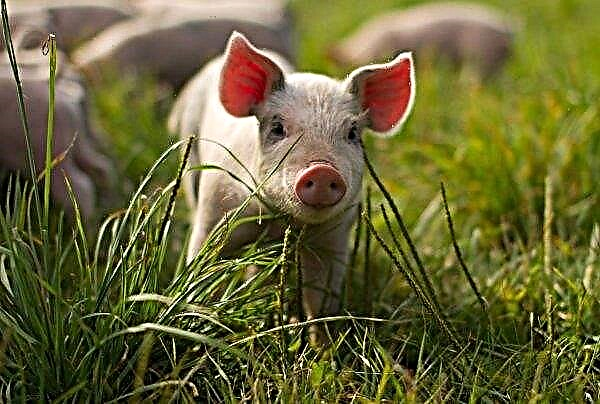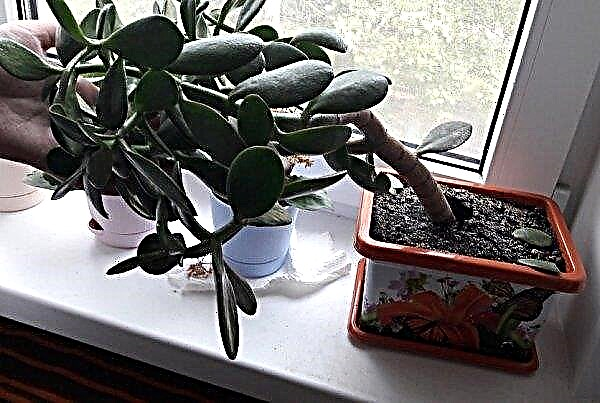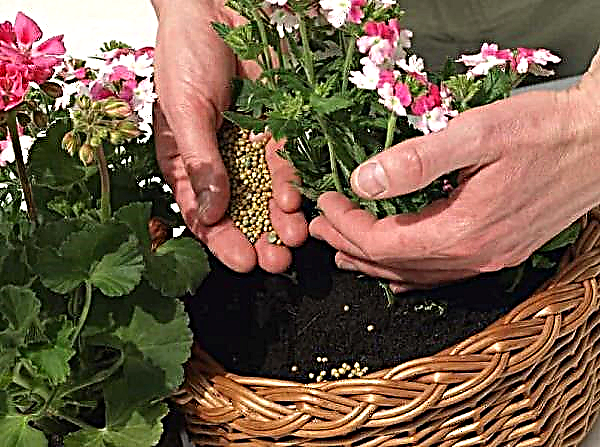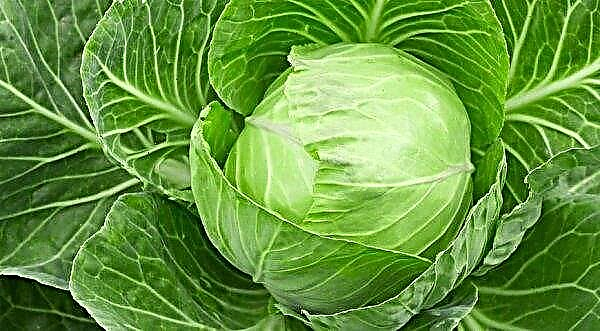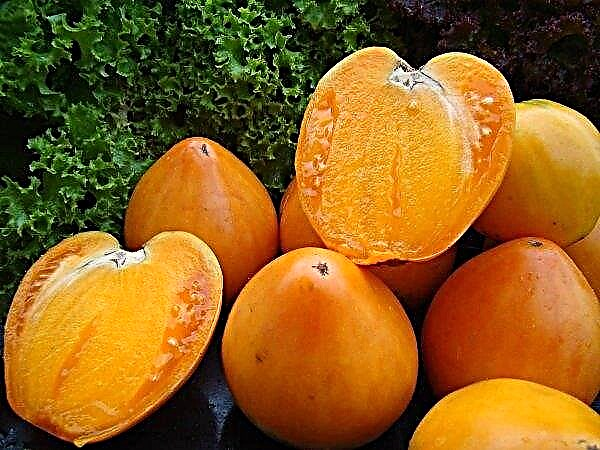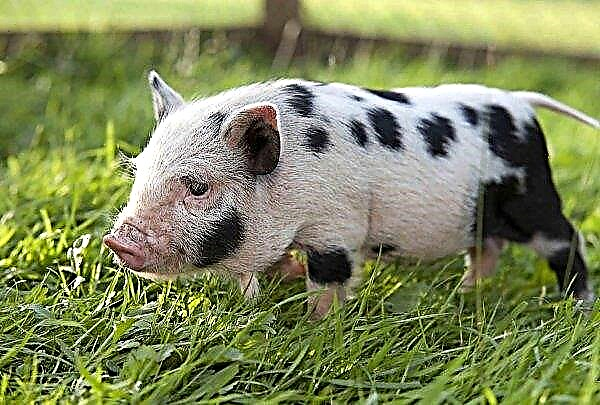More recently, the concept of "country greenhouse" has been associated with a makeshift structure built of waste racks and poles, covered on all sides with a plastic film, at best - glass. The article will discuss the greenhouse of a new generation - a greenhouse of a spherical shape, which is called "dome".
What is a domed greenhouse
Dome (geodetic)a greenhouse is a structure, the basis of which is a platform in the shape of a circle, and the structure itself is a hemisphere.
Did you know? In Iceland, greenhouses are “fed” in an unusual way: heat from geysers.
Features of the dome shape:
- Energy efficiency. The unique design of the greenhouse allows a long period of time to keep heat inside the building without the use of additional heating.
- Resistance to weather phenomena (squally winds, snowfalls) - streamlined shape and round base give additional structural strength.
- Attractive appearance - does not spoil the landscape design.
- The dome consists of triangles made of plastic film, glass or polycarbonate.

The following materials are used for the frame:
- Metal. Treated with anti-corrosion agents, the frame made of metal is very durable, suitable for year-round use.
- Wood. It is notable for its accessibility and cheapness, but it requires regular impregnation with special means (protection from precipitation, grinder insects).
- Plastic. It is characterized by durability, does not make the dome design heavier, and is convenient for installation work.
- The benefits of a sphere-shaped greenhouse:
- Easy to disassemble.
- There is no need to build a powerful foundation. It is characterized by stability.
- The consumption of covering material is much less than the construction of a similar cubature and usable area, but of a different shape.
- Dome design withstands heavy loads. Snowfalls are not terrible.
- Suitable for earthquake-prone areas.
- Plants receive the maximum amount of light due to the transparency of the dome from all sides.
- The heat accumulated during daylight hours in the upper air layers of the room at night falls down, evenly warming the plants. No additional heat source required.
- Disadvantages:
- The area of the circular foundation must be large, otherwise there will be a problem associated with the inability to care for the plants "to their full height."
- In the artisanal construction of a dome-type greenhouse, accurate technical calculations, carefully verified drawings and diagrams are necessary.
- The abundance of joints implies sealing.
How to make a domed greenhouse with your own hands
The construction of a greenhouse of a spherical shape requires a leisurely detailed preparation of each stage of the construction of the greenhouse.
Important! The main postulate for builders-summer residents is the height of the structure is half the diameter of the base.
Step-by-step instruction
The main stages of the construction of a geo-dome greenhouse consist of the following steps.
Sizing and creating a drawing
The size of the future structure is directly related to the area of the site, which is planned for a greenhouse. It is also necessary to have a clear idea of what crops and in what quantity it is planned to grow in a greenhouse. Geokupol is a complex technical structure, therefore, drawings and calculations should be made accurately.
To perform the drawing, the following calculations are required:
- area of the base (foundation);
- room height;
- hemisphere surface area;
- number of edges, their length;
- intercostal angles (quantity and degrees);
- connecting elements (quantity and types).
Did you know? Holland is a record country in the number of greenhouses. The covering material in them is glass, not modern plastic.
Selection and calculation of materials
After the calculations made, it will become clear how much materials will be needed. In our case, polycarbonate will be the covering material, and the base of the frame can be metal, wooden, plastic battens.
For all types of frame materials, foil, steel strips, flange connectors, mounting hardware (screws, screws, etc.), sealants and impregnating compounds (for metal and wood) are required. Asbestos pipes will be needed for foundation piles. Required equipment: shovel, level, tape measure, drill, screwdriver, hammer, cutting tool.
Site selection and site preparation
The main criterion in choosing the location of the structure is a perfectly flat area. If the site has elevations, bumps, bumps - work to level the surface is inevitable. In addition, the selected area should be as light and open as possible, not only in a given period of time, but also after a few years. Since the greenhouse is a long-term construction, bushes and trees with potential darkening should not grow around it.
Base installation
Geodetic greenhouses can be constructed either with a foundation on piles, or tape (it is assumed year-round operation of the structure), or - directly on the surface of the earth. In the latter case, the base area of the greenhouse is covered with any non-woven material (for example, spanbond) so that weeds do not subsequently "penetrate" the greenhouse, over which a layer of rubble or gravel is poured, which will serve as the base of the beds.
Important! The greenhouse sheathing with polycarbonate sheets should be carried out at an air temperature of +18 ... + 20 ° С.
Before assembling the dome, the foundation of the structure must be made. To do this, you can use boards that are placed along the perimeter of the base in the ground, forming a polygonal box of 10-12 corners, about 80 cm high from the ground.
Frame creation and assembly
Using a geodetic calculator, they calculate the lengths of metal shaped pipes or wooden blocks, from which triangles are made - the main elements of the dome. The choice of materials is up to you. Pipes are treated with an anti-corrosion compound, wooden - with special impregnation.
Next, following the assembly scheme of the greenhouse, they begin to connect the triangles to each other. The frame is mounted from the bottom up. The base of the triangle is fixed on the surface of the foundation (using special brackets) or the surface of the earthen platform so that the acute angle of the triangular element is perpendicular upward. The next row is “built up” to the bottom row of triangles, gradually turning the triangles into a surface of rhombs and hexagons. In the upper part of the geodesic dome, hinged hinges fasten the transom wings for ventilation. In the assembly process using screws, connectors.
The next row is “built up” to the bottom row of triangles, gradually turning the triangles into a surface of rhombs and hexagons. In the upper part of the geodesic dome, hinged hinges fasten the transom wings for ventilation. In the assembly process using screws, connectors.
Polycarbonate lining and frame insulation
Polycarbonate, as a covering material, undoubtedly occupies a leading position. It is durable, retains heat well, differs in that it protects plants from ultraviolet radiation, while perfectly transmitting light into the building, withstands low temperatures and, importantly, is easy to use.
When installing sheets, it must be taken into account that the size of the polycarbonate element varies up to 5 mm at temperature ranges from -30 ° C to + 30 ° C. Preparatory work when covering the frame with polycarbonate sheets consists in cutting, sealing the end faces of the element, drilling holes.
You can use ordinary screws. In order to prevent the process of destruction of the material, it is necessary to observe technological gaps, the holes should exceed the diameter of the mounting hardware by about 2 mm, use thermal washers.
Arrangement of the inside of the domed greenhouse
The main stages of arranging the interior of the geo-dome greenhouse:
- The northern part of the sphere is glued with reflective materials from the inside, additionally attracting heat to the room.
- Install a barrel of water or several containers. The more vessels with water will be inside the greenhouse, the more stable the microclimate in the room will be. Heated during the day, the water will gradually cool at night, giving off heat to plants. The humidity level will also be at one specific level.
- Install heating (subject to year-round use) and ventilation systems. As heating elements use pipes under the beds (water heating), electric, infrared heaters.
- If desired, you can make an automatic irrigation system.

How to choose the right domed greenhouse from the manufacturer
The main criteria for choosing a domed greenhouse for industrial production should be clear ideas:
- The external dimensions of the building, which directly depend on the area of the proposed foundation.
- What types of plants and at what time of the year will be cultivated indoors. The internal "filling", and, consequently, the cost of the construction, will depend on this.
- The quality of the covering material. Polycarbonate must have a certificate of quality.
- Materials of which the frame is made.
- The quality of assembly of the dome parts.
- The business reputation of the manufacturer of the greenhouse in the market for similar products.
Installation of a domed greenhouse in a personal plot is a labor-intensive, responsible, expensive process that requires certain engineering and construction skills. However, strictly observing the construction technology, it is possible to independently erect not only a construction that is efficient in terms of yield and labor costs, but for many years to enjoy the aesthetically attractive appearance of a transparent polyhedron.


